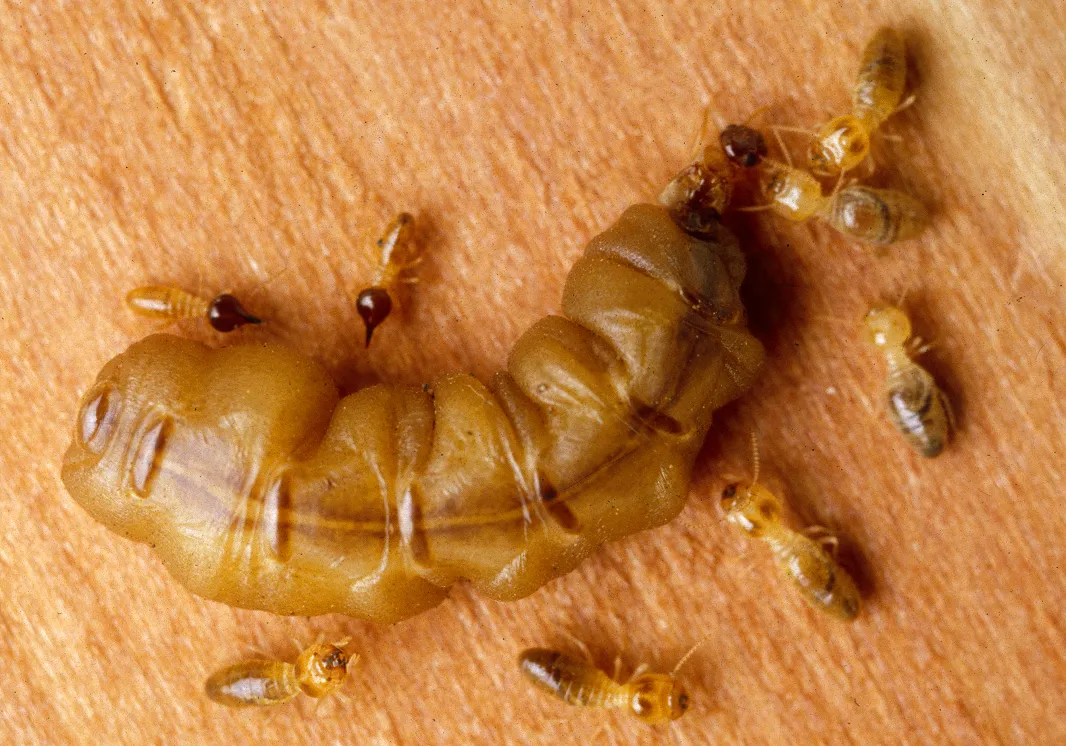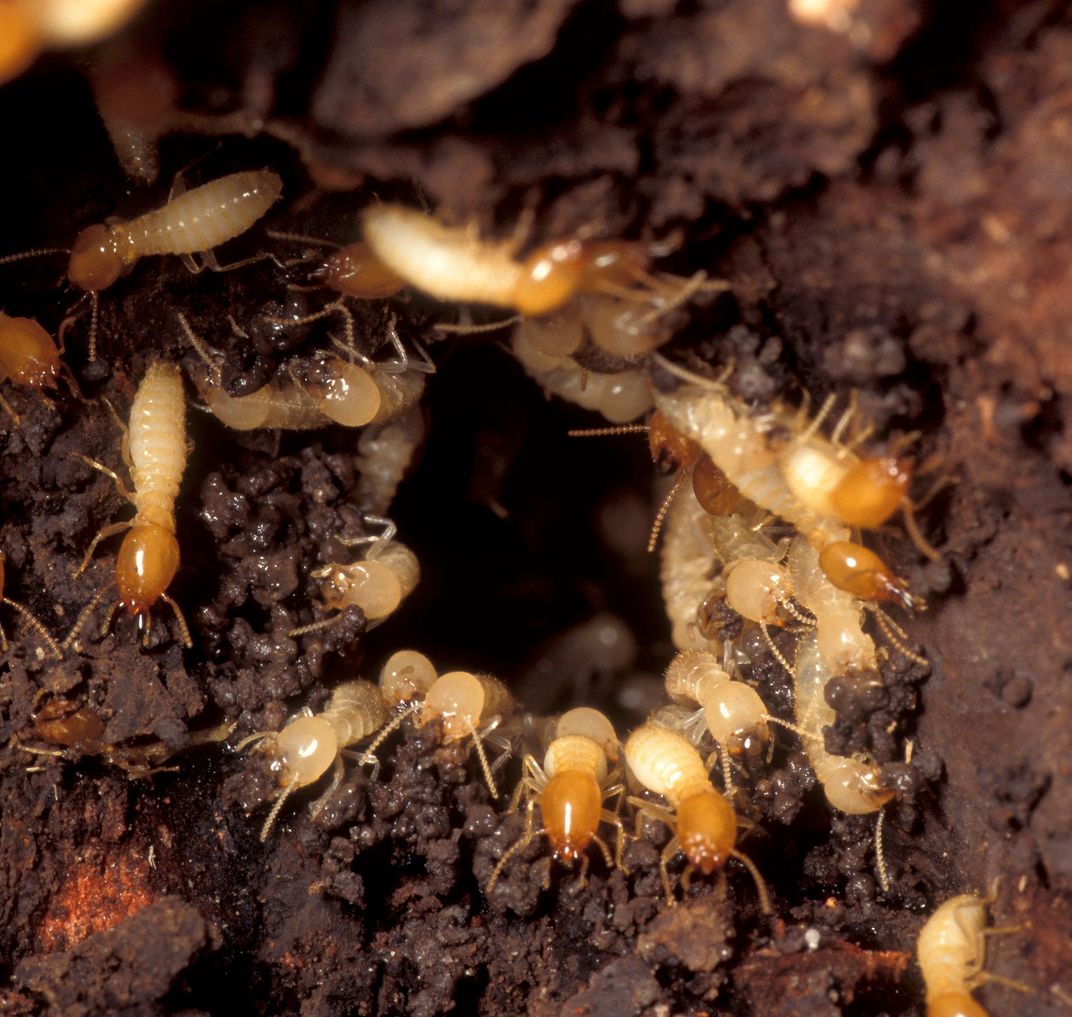All-Female Termite Colonies Reproduce Without Male Input
These insects seem to have dispensed entirely of the need for males and their sperm
:focal(1078x688:1079x689)/https://tf-cmsv2-smithsonianmag-media.s3.amazonaws.com/filer/15/2c/152c8ec1-8966-4ac0-8754-7080a16f7315/istock-529352287.jpg)
At only a few millimeters in length, their soft, doughy bodies numbered in the thousands. Even under the microscope, the males and females were just barely distinguishable, but Toshihisa Yashiro had already begun to count. Hundreds of termites into the census, Yashiro’s doubts finally began to disappear—there wasn’t a single male to be found.
Today, in the journal BMC Biology, Yashiro’s research team reports the discovery of naturally-occurring all-female termite colonies in the southern regions of Japan, representing the first-known asexual termite populations in the world.
At first, it was hard to believe. “[Much like] gender-equal societies in humans, termite colonies commonly have equal numbers of males and females,” explains Yashiro, a biologist at the University of Sydney. “Both males and females work equally to make the society function.”
During fieldwork on the coast of Japan, Yashiro and his colleagues were surprised to stumble across several populations of Glyptotermes nakajimai termites that appeared to be exclusively female. The only way for these colonies to sustain themselves would be through asexual reproduction, but Yashiro’s burden of proof was enormous. To test this theory, he would have to painstakingly rule out the presence of males in colonies of thousands of insects.
So Yashiro and his team began to count. Over the course of a year and a half, the researchers sexed thousands of teeny termites from ten field sites stretching across Japan’s mainland and several adjoining islands. It didn’t take long for geographic differences to emerge. On Honshu, Japan’s largest and most populous island, as well the offshore islands of Amami-Oshima, Okinawa and Ogasawara, the typical fifty-fifty gender balance was intact. But on Shikoku and Kyushu—the smaller two of Japan’s four main islands—the dudes had disappeared.
Though Yashiro and his colleagues examined over 100 individuals from each of 74 different colonies, they needed to be sure. Luckily for the researchers, once a termite queen successfully mates, she bears that badge for life in the form of a little sperm-hoarding pouch. When the team unlocked these tiny treasure troves, they found that while the mixed-sex colonies were led by queens with semen to spare, the lady monarchs of all-female clans carried only empty tanks.

To further confirm asexual reproduction, the researchers turned to examining eggs—hundreds of them. While nearly half of the eggs from mixed-sex populations had been inseminated, not a single fertilized egg from an all-female colony was found. Despite this, the eggs in both populations hatched at about the same rates. The southernmost regions of the Japanese mainland appeared to support only uncontacted virgin termites—and they were thriving.
Rebeca Rosengaus, an insect sociobiologist and behavioral ecologist at Northeastern University who was not affiliated with the study, says she was “impressed,” praising the work as “thorough” and “very comprehensive.” “No study in the past [has described] a complete elimination of males,” she adds. “That is completely new and exciting.”
Termites have never been particularly romantic (with their wood-munching tendencies, they’re arguably nature’s tiniest homewreckers). But in fact, most termites are monogamous. When males and females reach sexual maturity, they embark on a nuptial flight in search of appropriate real estate for their future family, only consummating the union upon taking up residence in their new quarters. Here, the newly anointed king and queen will breed an army of workers and future royals, arranged into castes similar to those seen in bees.
Although the social structures of termites and bees bear some striking similarities, the two lineages are evolutionarily distant. Termites (which are technically a type of cockroach) appear to have evolved their monarchical tendencies independently, and additional differences exist between the species as well. For example, termites employ both male and female soldiers, while the entire workforce in a beehive is female—a legion of sisters that serve under a busy queen with essentially no input from the few, stingless males.
These female-favoring communities are facilitated by the unusual way that bees are known to sexually reproduce. Unlike human (and most termite) offspring, which inherit genes from each parent yielding XX females and XY males, bees can hatch from both fertilized eggs and unfertilized eggs. The offspring from unfertilized eggs only receive chromosomes from their mother, creating XO males with half as many chromosomes as their female counterparts. So in most bees, females can only hatch from fertilized eggs, and all fertilized eggs hatch female, requiring literal male input to sustain the species.
However, a few bee lineages have been identified in recent years that hatch females from unfertilized eggs by doubling up on mom’s chromosomes. This simple switch can have powerful consequences, as females now beget females without the need to hunt for sperm, allowing some populations of bees to reproduce without males. Termites, it seems, can engage in similar sperm-less reproduction—but unlike in a beehive, a termite colony that eliminated males could completely upend the preexisting social structure.
“[It’s] dramatic that… males are not essential for the maintenance of animal societies in which they previously played an active social role,” Yashiro says. And, as Washington State University entomologist Laura Lavine points out, we aren’t exactly strangers to termites. Why has it taken so long to locate the timber-terrorizing Amazonians of the insect world?
A few wild termite colonies have been observed reproducing asexually before, but this behavior in mixed-sex colonies is thought to help prevent inbreeding between the fertile kings and their own offspring. The queens have the ability to hatch unfertilized eggs into new queens, but at the end of the day, most termites remain fair-weather fornicators. Following flings with asexuality, queens generally rejoin their kings.
The fact that most termites haven’t yet transitioned to chastity may be due to an evolutionary advantage of sexual reproduction. As it turns out, sex is useful for maintaining the health of a colony. Mixing the genes of both parents generates diversity in a population, which comes in handy when extreme circumstances strike, such as disease or a shift in environment.

So why did all-female populations evolve at all? To puzzle out the answer, Yashiro and his colleagues pitted the asexual and sexual termites head-to-head—literally. When they measured the noggins of soldier termites from the all-female and mixed-sex colonies, the researchers found that, unsurprisingly, those in female-only colonies looked a lot more alike. But in this case, uniformity wasn’t necessarily a bad thing.
With their relatively unarmored bodies, termites aren’t built for the offensive. Instead, when the colony is under attack, the insect’s main mode of defense often involves plugging the entrances to their nests with their own heads. A variety of head sizes could actually be a burden rather than a boon, meaning the loss of males may have actually empowered these female fighters to survive an assault.
Because diversity provides a critical safeguard in the face of microbial infections, Rosengaus says it will be important for future work to look at how susceptible these different groups are to disease. It’s possible that asexual, all-female colonies have survived only in Shikoku and Kyushu because these regions aren’t as rife with termite pathogens, adds Lavine, who did not participate in the new research—but this theory has yet to be tested.
Why colonies split into asexual and sexual communities in the first place is anyone’s guess. Based on genetic evidence, Yashiro and his team pinpoint the rift in termite lineages at roughly 14 million years ago. But as the two populations still exist side by side, “we may be witnessing evolution in action,” Rosengaus says.
Because these groups of colonies are geographically separated, they’re probably no longer intermingling—and it’s even possible that a completely new species composed entirely of single ladies could arise in the future.
For now, the two populations are still technically within the same species, but this discovery probably won’t be the last of its kind. Female species from all across the animal kingdom have come up with clever ways to go it alone. Termites may be known for lunching on lumber—but it’s safe to say that not all females need wood.
/https://tf-cmsv2-smithsonianmag-media.s3.amazonaws.com/accounts/headshot/10172852_10152012979290896_320129237_n.jpg)
/https://tf-cmsv2-smithsonianmag-media.s3.amazonaws.com/accounts/headshot/10172852_10152012979290896_320129237_n.jpg)